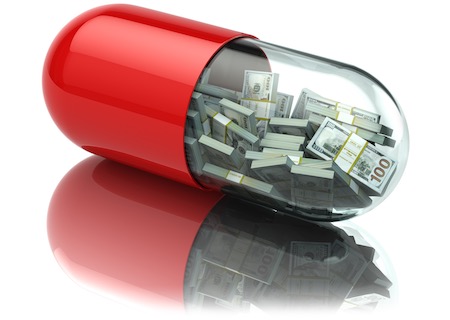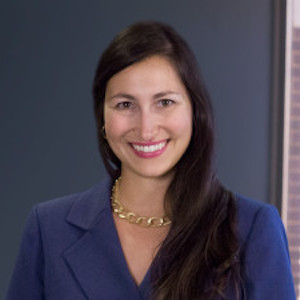 Drug manufactures spend billions of dollars in R&D and it takes years to get FDA approvals and patent protection. It is vital that these companies keep a vibrant and thriving product pipeline to offset costs of failed drugs, which do not work as intended or do not get FDA approval. For example Eli Lilly’s Alzheimer drug solanezumab had extremely high expectations of success, but disappointingly failed in a large clinical trial. Additionally, once patent protection expires, generics are free to make and sell formulas at much lower costs, since their manufacturers do not have to invest time, money and resources into R&D.
Drug manufactures spend billions of dollars in R&D and it takes years to get FDA approvals and patent protection. It is vital that these companies keep a vibrant and thriving product pipeline to offset costs of failed drugs, which do not work as intended or do not get FDA approval. For example Eli Lilly’s Alzheimer drug solanezumab had extremely high expectations of success, but disappointingly failed in a large clinical trial. Additionally, once patent protection expires, generics are free to make and sell formulas at much lower costs, since their manufacturers do not have to invest time, money and resources into R&D.
Yet, all the money spent can yield tremendous dividends when a drug reaches “blockbuster” status. To attain this label, a drug must be so popular that it generates at least $1 billion in annual sales. Often treating the most common chronic and long-term ailments such as diabetes, high cholesterol and blood pressure, some examples of pharmaceuticals reaching this status include Lantus, Lipitor, Plavix, Zoloft and Advair. Since many of these drugs are for chronic lifestyle illnesses stemming from lifestyle choices like overeating, smoking or alcoholism, the patients keep returning for refills of these “lifestyle drugs”, which line the manufacturer’s pockets with more cash.
Pharmaceutical giants like Pfizer- the maker of Lipitor and Viagra- and Eli Lilly -which manufactures Cialis and Prozac- are no strangers to the world of blockbusters. Though creating a billion-dollar drug is an admirable goal, it would not be prudent to only rely on blockbuster drugs. As with solanezumab, when a drug that is expected to sell off the charts fails (for instance through a drug scandal, unexpected side effects, a recall, or failed clinical trials), it can be disastrous. This demonstrates why a diverse and financially effective lines of products must be developed. Further, with the number of drug approvals by the FDA on the decline, it is even more important now to maintain multiple projects.
How Eli Lilly and Pfizer are rebuilding their slowing pipelines and striving for new potential blockbusters
With the threat of biosimilars hitting the market as a patent’s life ends and potentially facing clinical trial setbacks, Big Pharma is constantly looking for the “next big thing”. This is no different for Pfizer and Eli Lilly whose IP success is only sustainable until the patents expire and generics flood the scene offering the same active ingredients for a fraction of the costs.
In 2015, Pfizer spent $7.7 billion on R&D costs and Eli Lilly spent $4.5 billion. The forecast for Pfizer and Lilly in 2022 is expected to grow to $7.8 billion and $5 billion respectively. This is on trend with the worldwide pharmaceutical numbers at an expected growth of 2.8% to $182 billion in 2022. Both companies are targeting the largest therapy areas with sales which include oncology leading the group followed by anti-diabetics and anti-rheumatics.
Eli Lilly had been relying on its products that are over a decade old and will need to rebuild its slowing pipeline. As a result, Lilly has been focusing its R&D efforts, since 2015, in those top sales fields of oncology and diabetes. To accommodate this R&D, the company announced in 2015 that it had plans to expand its immune-oncology facilities in New York City.
Also in 2015, the FDA approved a drug called Portrazza which is a biologic intended for first-line treatment of people with metastatic squamous non-small cell lung cancer. This type of lung cancer is common and caused by the formation of malignant cells in lung tissues. The cost to patients of Portrazza is set at $11,430 a month and sales of the drug are projected to be $497 million by 2020. This drug is following a recent market movement where the top earning lifestyle drugs are biologics – such as Humira by AbbVie and Enbrel, sold in the U.S by Amgen and overseas by Pfizer. Those two biologics treat auto-immune diseases and arthritis/psoriasis respectively and like other biologics are prepared using live cell cultures instead of being produced in a lab. In fact, per a prediction, biologics are expected to account for 50% of the Top 100 product sales by 2022. Another potential top earning sector is diabetes drugs. Since the US is the largest consumer of prescription drugs, drugs for the most common treatable diseases here — diabetes and arthritis—account for six of the fifteen top selling drugs in the world. It is projected that the therapy area of anti-diabetic drugs will grow 7% annually by 2022, as the U.S and global populations get fatter and fatter.
Still under review are the investigational drugs MONARCH 2, or abemaciclib, and Baricitinib. MONARCH 2 is being tested for use to treat many different types of cancer and is in Phase 3 trials with the FDA. Baricitinib, a rheumatoid arthritis treatment has had its new drug application (NDA) review period extended by the FDA as of January 2017. This extension is in response to the FDA’s requests for more information and allows the FDA to review additional data submitted by Lilly.
In the anti-diabetic field, Lilly received approval for the biosimilar insulin glargine, Basaglar, for type 1 and type 2 diabetes, which is similar to Sanofi’s Lantus. Basaglar launched in December 2016 and is sold for 15% less than Lantus and Toujeo, also a Sanofi product.
Taltz, the IL-17 a psoriasis drug ixekizumab to treat adults with moderate-to-severe plaque psoriasis, was approved in March 2016. It is expected to generate over 1 billion dollars of sales in the US and Europe by 2022 because of its high clinical efficacy and good safety profile. This means that Taltz could achieve “blockbuster” levels for Lilly.
As for Pfizer, its cancer drug Ibrance was approved by the FDA in February 2015. Ibrance is in the FDA Phase 3/Registration for high-risk early breast cancer and early breast cancer in adjuvant setting in addition to Phase 2 for Squamous Cell Carcinoma of the Head and Neck. Additionally, in Pfizer’s pipeline are several biosimilars to drugs like Humira, Avastin, Epogen, Remicade and Herpicin. All of these biosimilars are in FDA phase 3 and would be valuable to Pfizer if they can cut into the market share already established by these name brands.
Despite all the work Pfizer and Eli Lilly are doing to create booming portfolios, neither company can compete with Roche, based in Switzerland, which leads the industry with the most valuable pharmaceutical pipeline in the industry at $43,171 million (NPV). While Roche’s core products are for oncology, other products like Ocrevus for multiple sclerosis and crenezumab for Alzheimer’s Disease as well as other drugs for advanced forms of macular degeneration create the most value. But, Roche has had to spend a great deal of money to achieve such a valuable pipeline, and in fact is expected to surpass drug heavyweight Novartis in money spent on R&D by 2022.
While creating a blockbuster drug is a dream come true for pharmaceutical companies, medicines do not get recognized as such overnight. An enormous amount of money, arduous work, clinical trials and potential setbacks must be budgeted for in the R&D process. Any success a drug achieves, even if not a blockbuster, is often used to counter the money and efforts wasted in formulas that do not amount to anything or are downright failures. Lastly, those that do shoot their way to the top have a finite time in the spotlight before falling off the proverbial patent cliff. Once the patent and any exclusivity has expired, bottom lines sink with the influx of generic products.

![[IPWatchdog Logo]](https://ipwatchdog.com/wp-content/themes/IPWatchdog%20-%202023/assets/images/temp/logo-small@2x.png)

![[[Advertisement]]](https://ipwatchdog.com/wp-content/uploads/2024/04/Patent-Litigation-2024-banner-938x313-1.jpeg)
![[Advertisement]](https://ipwatchdog.com/wp-content/uploads/2024/04/Artificial-Intelligence-2024-REPLAY-sidebar-700x500-corrected.jpg)
![[Advertisement]](https://ipwatchdog.com/wp-content/uploads/2024/04/UnitedLex-May-2-2024-sidebar-700x500-1.jpg)
![[Advertisement]](https://ipwatchdog.com/wp-content/uploads/2024/04/Patent-Litigation-Masters-2024-sidebar-700x500-1.jpg)

![[Advertisement]](https://ipwatchdog.com/wp-content/uploads/2021/12/WEBINAR-336-x-280-px.png)
![[Advertisement]](https://ipwatchdog.com/wp-content/uploads/2021/12/2021-Patent-Practice-on-Demand-recorded-Feb-2021-336-x-280.jpg)
![[Advertisement]](https://ipwatchdog.com/wp-content/uploads/2021/12/Ad-4-The-Invent-Patent-System™.png)






Join the Discussion
No comments yet.